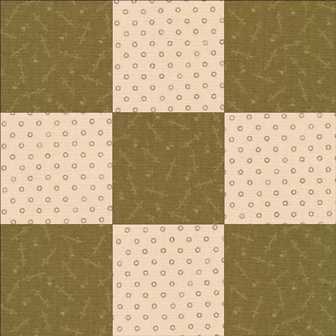
Nine Patch The Nine Patch is one of the simplest and quickest quilts to sew, and because it was a good way to use up every small scrap of fabric available, it was used often. On the prairie, sewing was an essential skill. Young girls learned to sew blocks before they learned to read. At an early age, often as young as 3 or 4, girls were taught to piece simple blocks such as the Nine Patch. Many were very skilled at piecing a block by age 5. Edith White, who grew up in the mid-1800's remembered, Before I was 5 years old, I had pieced one side of a quilt, setting at my mother's knee half an hour a day. This training was called fireside training. 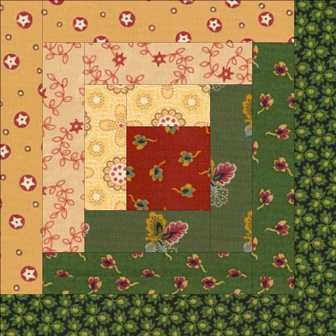
Log Cabin The Log Cabin block is one of the most well-known and popular of all patchwork patterns. To pioneers traveling West, it symbolized home, warmth, love and security. The center square of the block was done in red to represent the hearth, the focal point of life in a cabin or home. The name, Log Cabin, comes from the narrow strips of fabric, or logs arranged around the center square. Each fabric strip or log was added to the pattern in much the same way logs were stacked to build a cabin; and because the straight lines and small pieces of the pattern could utilize almost any fabric scrap available, it often became the final step in the recycling of fabric. Many Log Cabin patterns were worked in two color schemes, lights and darks, divided diagonally in the middle. This represented the sun's east to west movement in the sky. As the sun rose, its light shown on the cabin, creating the light side of the block. As the sun traveled west, part of the cabin was left in the shadow, creating the dark side of the block. This is often called the Sunshine and Shadow pattern. 
Pinwheel Nineteenth century quilts were primarily practical; beauty was secondary. Quilts served as window and door coverings. Hanging quilts on the dirt walls of a soddie, made them seem more homelike. Quilts could serve as privacy walls, creating sleeping areas in a soddie, or one room cabin. Quilts folded and laid on a board placed between two chairs or tree stumps, became a sofa. When a quilt became so badly worn around the edges that even rebinding could not rejuvenate it, a seamstress would cut it down to eliminate the worn areas, or rework it into a child's quilt. Any quilt was too precious to discard. The importance of quilts in women's lives was best expressed in the statement of one 19th century homesteader, Lydia Roberts Dunham, who said, "I would have lost my mind if I had not had my quilts." 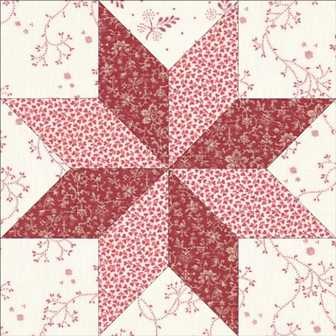
Eight Pointed Star There are hundreds of star patterns. Some quilts have just one large radiating star, often called the Star of Bethlehem or Blazing Star, while in other quilts, dozens of smaller stars are used. The simplest and most popular star pattern is an eight-pointed star. A star pattern is not an easy design to cut or sew. Precision is extremely important as any inaccuracy in cutting or piec-ing is multiplied as pieces are added. If poorly pieced, the quilt will not lie flat when finished. An intricate star pattern was one way for a woman to show her needlework skills. Many times the quilt maker deliberately sewed a mistake somewhere in the quilt. It is thought, by some, that this reflected the maker's faith in God; for only God can make a perfect thing. 
Crazy Quilt Making utilitarian quilts fell out of favor in the late 1800's and early 1900's as America became more industrialized and technology brought improvements to the home. The Crazy quilts or throws of this era featured rich colors and textures and were used to decorate the parlor. Skill in fine embroidery was emphasized. Victorian quilters filled their quilts with bits and pieces of their personal past; a piece of father's vest, a husband's tie, lace from a wedding veil, or ribbons commemorating political events. 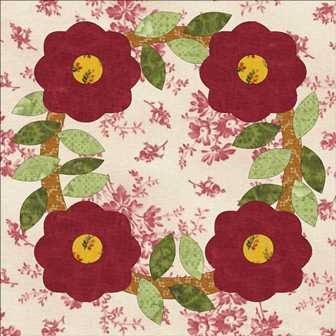
Rose of Sharon One of the oldest applique quilt patterns is the Rose of Sharon. The Rose of Sharon, mentioned in the Bible, might actually refer to a wild tulip that grows today on the plains of Sharon in Palestine. When the Bible was translated into English, the word rose was used in place of the word tulip. During the 1800s, there was a custom for a young girl to make a baker's dozen of quilt tops before she became engaged. This collection consisted of 12 utility quilts, and one great quilt, which was pieced or appliqued, as a show piece for a bed. The Rose of Sharon was often used for the great quilt. Many young women traveled West as brides, their great quilt folded safely in a trunk. The Whig Rose is another name for this pattern. It is thought the name came from the 1828 Presidential election. The newly formed Whig party hoped to beat out Democrat, Andrew Jackson. The Whig party dissolved in the mid 1800's, but the pattern name lived on. 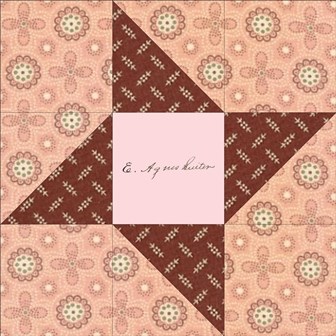
Friendship Quilt The quilts the homesteaders brought with them were a comfort to these women who traded their home, family and friends in the East, for the uncertainty of traveling through vast prairies in the West. A quilt that held special value to the pioneer women was the Friendship Quilt. Often it was done is secret, and then given to the woman as a going away gift. It usually was a group effort, with each block being sewn by a friend or relative with their name embroidered in the center. Putting a Friendship quilt on the bed, gave a woman a sense of connection with her former way of life. It kept alive the memory of family and friends, providing comfort and company during the difficult days of homesteading. One woman homesteader said, "When I get lonely, I read the names on my quilt. "It was like putting her arms around someone and giving them a hug. 
God's Eye The practice of using quilts as burial shrouds was fairly common among westward travelers. Wood was often scarce for coffins, so families used what was available and appropriate. Wrapping a loved one in a quilt was a way of not only preparing the body for burial, but of giving reassurance to the living that the decreased person was still linked to his or her family. A quilt that carried a Biblical name was a source of comfort, and with their enduring faith, kept the family going. Other popular quilt patterns were Jacob's Ladder, Cross and Crown, Bethlehem Star, Crown of Thorns, David and Goli-ath, Eastern Star and Star of Eden. 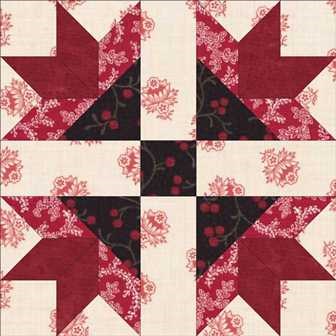
Wild Goose Chase The homesteaders watched the migration of flocks of geese and created quilts with that in mind. Although the triangle shape is used in hundreds of other quilt designs, in this quilt block, triangles represent the geese. Pioneer women expressed their artistic abilities and creativity in the way they arranged the triangles or geese, and in the colors they used. That may be one reason why the Wild Goose Chase pattern has at least 14 variations. Other patterns that reflect nature include Bear Paw, Dove in the Window, Hen and Chickens, Dogwood and Sunflower. Quilting was not just a woman's activity. Over the years, men have also been quilters. In fact, when they were boys, at least two presidents, Calvin Coolidge and Dwight D. Eisenhower, helped their mothers piece quilts. 
Corn and Beans Quilting allowed women to escape from the hard work, rigors and drabness of their everyday routines. With 7-8 women gathered around the quilt frame, a quilting bee, offered an excellent way to socialize. The Quilting Bee was such a popular event that Stephen Foster, one of America・s beloved songwriters, wrote a song about it: "In the sky the bright stars glittered On the banks, the pale moon shone, And was from Aunt Dinah's quilting party I was seeing Nellie home." 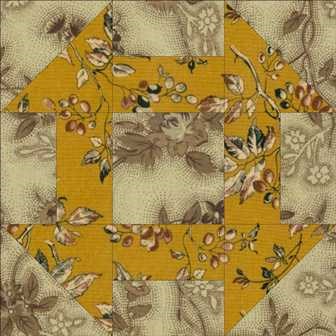
Churn Dash A quilt historian says that quilts had characteristics so localized that they could be classified geographically almost as easily as the Yankee twang or the southern drawl. But as the homesteaders traveled West, blending together on the trail and in the new territories, the patterns became intermingled and renamed. The Churn Dash pattern, for example, has 21 different variations and names. But, whatever the name, one can be certain it was meaningful to the maker, for even the simplest quilt represented a considerable investment of time and energy. And when the cold winter winds blew snow through the chinked cracks of the log cabin, a quilt was a welcome cover, whatever its name. 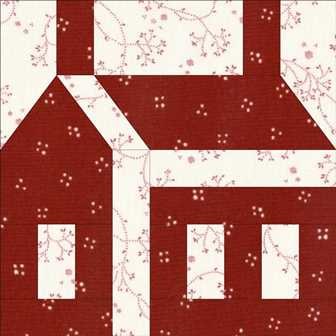
Schoolhouse The Schoolhouse block was often a variation of a house or church pattern. Most featured a side view of the building and were either pieced or appliqued. Depending on the skill of the quilter and time available to her, crosses in the windowpanes and outlines of the doors could be added. During World War II, quilts were a way to raise money to support the Red Cross. The Signature Quilt was especially popular. Business people, store owners, and community citizens paid a small fee to have their names embroidered on quilt blocks. The finished quilt was raffled off with all proceeds going to the Red Cross. These quilts now serve as fascinating community records. 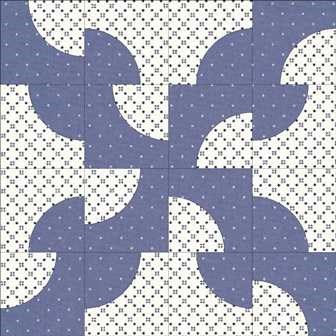
Drunkard's Path It is easy to imagine the origin of this name. The meandering diagonals resemble a drunkard's staggering walk. Sewing for a cause is an old tradition. Women made quilts to raise money and consciousness, both to promote the abolition of slavery and to promote women's rights. Women across the country were also involved in the Temperance Movement. By 1907, The Women's Christian Temperance Union had 350,000 members. Prohibited from voting, the Drunkard's Path was a popular way for a woman to express her opinion on alcohol and its use. It appears that more quilts were made for this cause than for any other. Although other colors were used, blue and white became the Temperance Union colors: white for purity and blue for water, the purest beverage available. 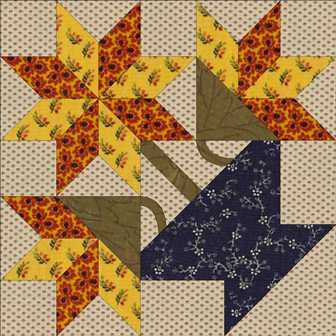
Basket This same theme is possible to create in a pieced quilt. Baskets, with flower designs, were a popular motif among quilt makers from approximately 1850 on, as they could be easily adapted to suit individual tastes, fabrics and color combinations. The variety of patterns seems almost endless, from baskets with handles to those without, to those with appliqued fruit and flowers added to the pieced basket, to pattern variations including Broken Sugar Bowl, Cake Stand, Flower Pot and May Basket. 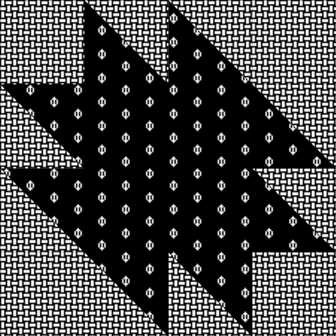
Anvil The Anvil pattern represented one of the necessary and important activities of the early settlers-blacksmithing. Other old-fashioned and basic patterns include Saw-Tooth, Bowknot, Carpenter's Wheel, Compass, and Monkey Wrench. By 1890, catalogue sales included quilt patterns. If a woman ordered her yard goods from Sears or Wards, she could purchase any of 800 designs for just a dime. By the early 1900's, magazines went a step beyond publishing patterns. Some had a column where readers could share favorite patterns and new ones they had designed. Quilters were no longer restricted to only quilt patterns known in their region. From bustling city to lonely farmhouse, women could be making the same quilt. 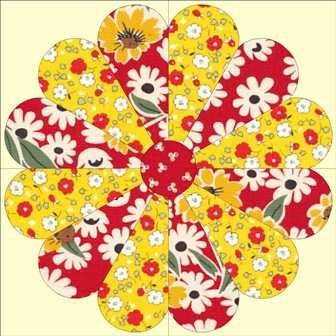
Dresden Plate To create the block, the petal shaped wedges of the design are pieced together and the completed plate is then appliqued to a square block of fabric. Many refer to quilts made during this era as feedsack quilts, because quilts were made by recycling the sacks that had been used for holding grain and seed. Women saved and traded the feedsacks to get the colors and patterns they wanted. Often, they would send a scrap of a specific feedsack with their menfolk, when they went to town, to make certain they returned with the desired pattern and color. Before printed patterns, quilters would sew a block together, as a way to give each other the pattern. Later, sample blocks, in cotton or silk, could be ordered from catalogues. 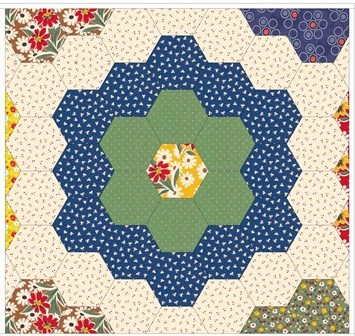
Grandmother's Flower Garden This block was popular during the Depression when quilt making was almost a necessity, as women were forced to return to frugal homemaking once again. The hexagon provided a way to use small fabric scraps, and was a cheerful reminder of colorful flower gardens, a much needed lift during hard times. The number of hexagons in the finished quilt and their size were a matter of pride for the quilter. This pattern has a long history, dating back to the Colonial Period where it was known as Mosaic, Honeycomb, or French Bouquet. Godey's Ladies book, founded in 1830, published the pattern in 1835. It is thought to be the first pieced quilt pattern published in America. 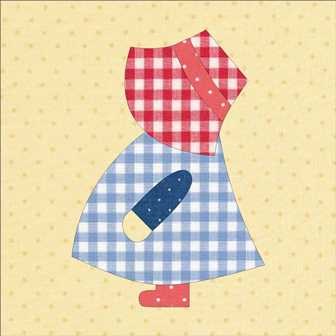
Sunbonnet Sue Sunbonnet Sue was one of the most popular patterns to emerge in the early 1930's. Sue had first appeared with her part-ner, Overall Bill, as outline embroidery in the late 1880's. Pat-terns for applique appeared around 1910. Feedsack prints were often used to create Sue's dress and bonnet. A personalized quilt would feature fabric from a child's dresses. During this period, quilts with juvenile themes for the nursery and young children emerged. Embroidered picture quilts, done in turkey red on a white background were very popular. Quilt themes were taken from nursery rhymes, story book char-acters, alphabet blocks, or folk tales. The quilts were crib size and were often used to teach children to sew or embroider. These designs also marked the realization that a child was a unique and distinct personality with special interests of their own. No longer were crib quilts miniaturized versions of adult patterns. 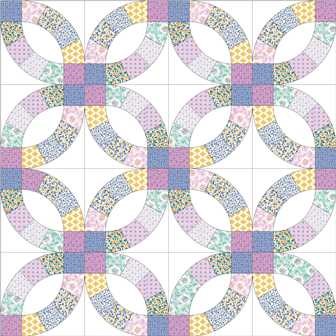
Double Wedding Ring Many of these quilts were made using quilt kits which could be ordered through catalogues. Some of the kits supplied patterns and instructions. The more expensive kits included pre-cut fabrics. These saved the quilters hours of work, as the pattern used hundreds of small pieces which needed to be cut exactly for the pieced quilt to lie smoothly when completed. A feature of many Double Wedding Ring quilts was its scalloped edge created by the circles that made up the quilt. 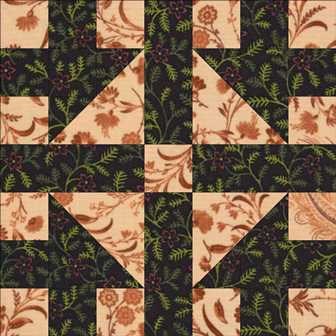
Lincoln Platform As a result, 270 million acres of land, owned by the Federal Government, in 30 states, was offered for homesteading, thus creating the Westward Movement, one of the largest migrations of people in our nation's history. The quilt patterns or blocks that are displayed in the Quilt Discovery Experience were in the quilts used by pioneer women as they traveled West and homesteaded the prairie. They also depict other popular patterns used in 1862, and in successive years, until the Homestead Act was repealed in 1986. Follow the Quilt Discovery Experience to learn more about quilt making, the history of quilts, and how quilts truly are documents of our American history. 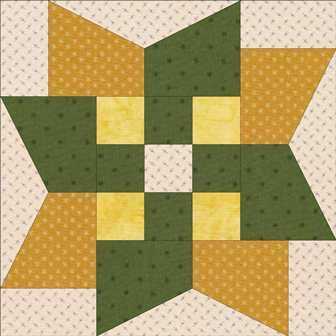
Nebraska Pinwheel Wheels represent movement. The pioneers depended on wheels to carry them across the plains. For the homesteaders, wheels were vital to their lives. They were the basis of their transportation. Wheels were used in sawmills and in gristmills where grain was ground into flour or meal. In the early 1900's, windmills pumped water for livestock and made life on the homestead easier. Because of its importance to the homesteaders in their everyday lives, the wheel was often a favorite quilt pattern. When the United States entered World War I in 1917, quilt making took on new significance. The government took all the wool produced for commercial use, and actively urged citizens to make quilts using the slogan, "Make Quilts-Save the Blankets for our Boys Over There." As a result, many utilitarian quilts for home use were made. These quilts soon earned the nickname of, "Liberty Quilts." 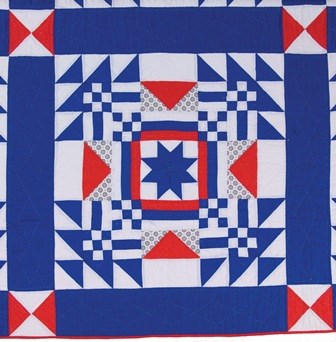
Nebraska State Block Through the years, a number of variations to the original pattern were made. Quilters today are able to alter the overall effect of the block by changing color combinations and the use of light and dark fabrics within the pattern. "Our lives are like quilts, Bits and pieces, joy and sorrows Stitched with love." The best kind of sleep beneath Heaven above, Is under a quilt, handmade with love.' 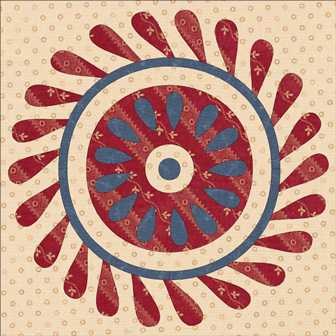
Liberty Star Block Through the years, women have been closely connected with political issues. Women listened to the men, and from their discussions, formed their own opinions. Their needles became their pens; their quilts their texts. Patriotic quilts have been made ever since the Revolutionary War. They portrayed love for one's country and celebrated American heroes such as George Washington and Abraham Lincoln. Quilts featuring the American Eagle enjoyed wide popularity from the late 1780's until the 1840's, were revived during the Civil War and again for our country's Bicenten-nial. Women used quilt designs to make their political statements. Patterns, which for years had Biblical or household names, were given relevant names by women who had social concerns on their minds. The pattern known as Jacob's Ladder became the Underground Railroad. The renaming of the Job's Tears pattern to Slave Chain, demonstrated northern women's political sentiments. Sources Bishop, Robert, Secord, William, Weissman, Judith Reiter and Ketchum, Jr. William C. The Knopf Collectors' Guides of American Antiques Quilts. Chanticleer Press, Inc., 1982. Brackman, Barbara, Create Your Family Quilt, The Electric Quilt Company, 2001 Brackman, Barbara, Encyclopedia of Pieced Quilt Patterns, American Quilter's Society, 1993 Crews, Patricia Cox, Naugle, Ronald, Nebraska Quilts and Quilt Makers, University of Nebraska Press, 1991 Cross, Mary Bywater, Treasures in The Trunk, Rutledge Hill Press, 1993 Dallas, Sandra, Simonds, Nanette, The Quilt That Walked to Golden, Breckling Press, 2004 Dietrich, Mimi, A Quilter's Diary Written in Stitches, Martingale & Company, 2008 Ferrero,Pat, Hearts and Hands, The Influence of Women and Quilts on American Society, The Quilt Digest Press, 1987. Finley, Ruth E., Old Patchwork Quilts and The Women Who Made Them, Charles T.Branford Company, 1929. Guebert,Alan, "Homestead Act is Uniquely American Story", Lincoln Journal Star, September 25, 2011 Martin, Nancy J., Pieces of the Past, That Patchwork Place, Inc., 1986. Pellman, Rachel T., Ranck, Joanne, Quilts Among the Plain People, Good Books, 1981 Regan, Jennifer, American Quilts: A Sampler of Quilts and Their Stories, Gallery Books, 1989 Websites www.patternsfromhistory.com/pioneer_patterns www.patternsfromhistory.com/bible www.patternsfromhistory.com/colonial www.womenfolk.com/quilting_history/pioneer |
Last updated: February 9, 2022
